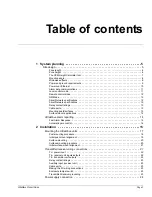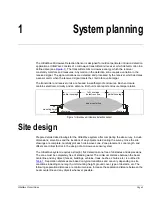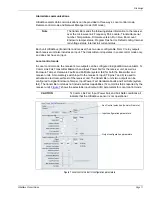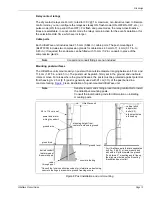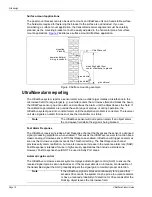
UltraWave Product Guide
Page 5
1
System planning
The UltraWave Microwave Detection Sensor is designed for outdoor perimeter intrusion detection
applications. UltraWave consists of a microwave transmitter and receiver, which detect motion in a
defined area (see
). The transmitter emits microwave energy, which the receiver
constantly monitors and measures. Any motion in the detection zone causes a variation in the
received signal. The signal variations are detected and processed by the receiver, which declares
a sensor alarm when the received signal meets the criteria for a valid target.
The transmitter and receiver units are housed in weatherproof enclosures. Each enclosure
contains electronic circuitry and an antenna. Both units can report enclosure tamper alarms.
Site design
Prepare detailed site drawings for the UltraWave system after completing the site survey. Include
dimensions, elevations and the locations of any objects noted during the survey. Once the site
drawings are complete, carefully plot each microwave zone. Zone placement, zone length, and
offsets are critical factors in the design of a microwave sensor system.
The UltraWave system requires a straight, flat, detection zone free of obstacles and depressions.
The zone must be completely free of standing water. The minimum distance between the beam
centerline and any object (fences, buildings, vehicles, trees, bushes, shrubs, etc.) is outlined in
. Separation distances are based on typical conditions and can vary depending on site
conditions including zone length, unit mounting height, ground cover, type of obstacle, etc. The
following separation distances are minimum values. Increase the separation distance between the
beam centerline and any objects whenever possible.
Figure 1
UltraWave
microwave detection sensor
partial coverage
mounting height
full coverage
detection zone
partial coverage
beam centerline
offset area
offset area



